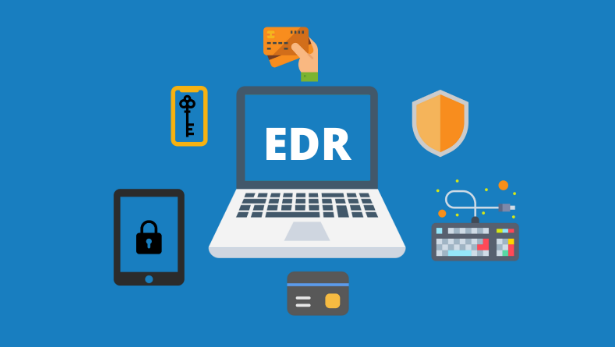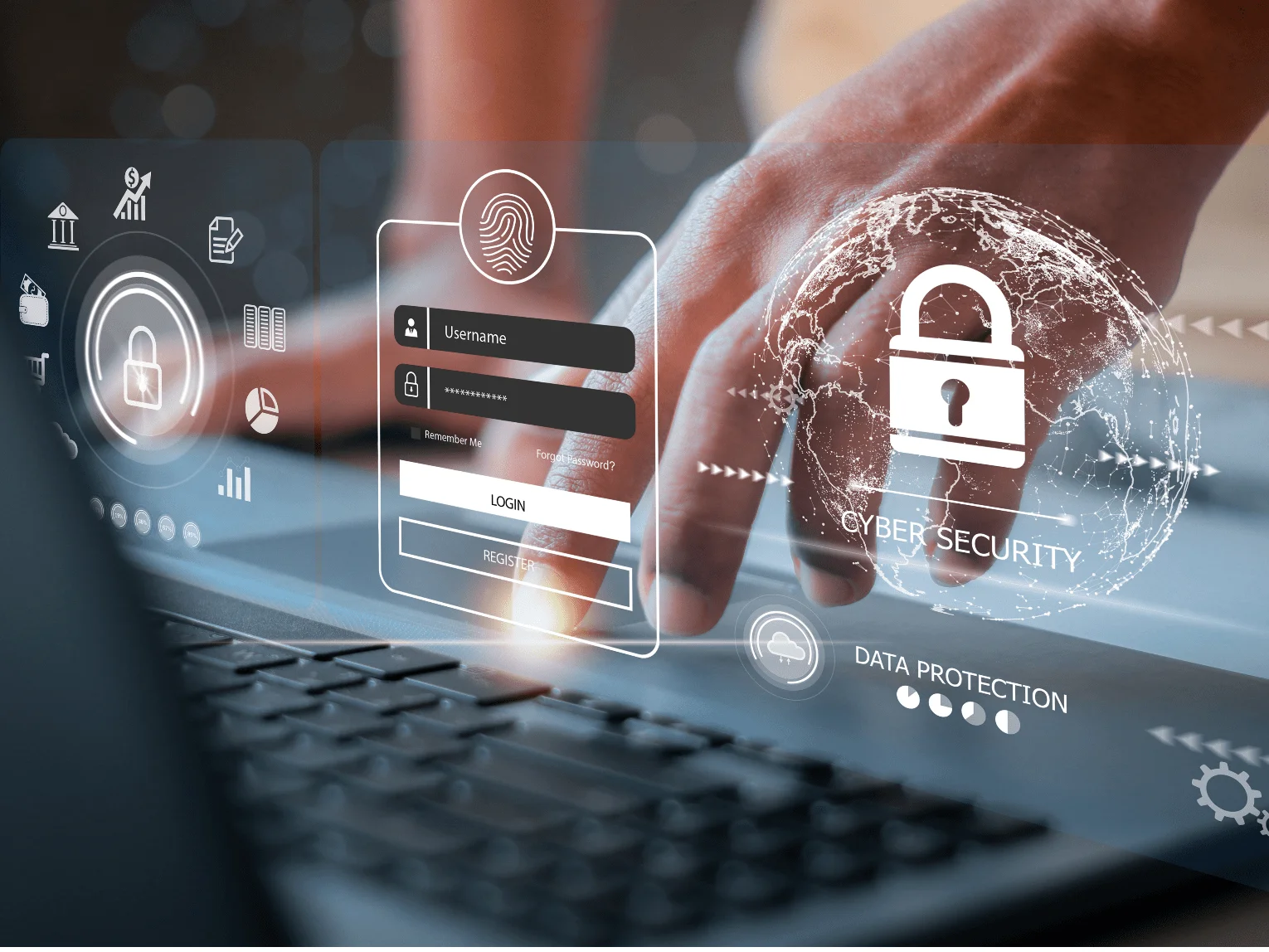When an organization's leadership arrives at the decision to improve its cybersecurity posture, they try to identify the best cybersecurity solution for their organization's size and requirements. In some cases, research begins with a search for “endpoint security” or “endpoint detection and response (EDR)” technology. While malware and ransomware attacks continue to disrupt businesses large and small across the global threat landscape, limiting normal business operations or causing billions of dollars in damage, the research on EDR can sometimes result in more questions than answers, especially when an organization doesn't have cybersecurity expertise on staff. One question frequently recurs: "Is EDR Software or Hardware?"
In a nutshell, the best EDR on the market today is software that has the following essential capabilities:
- EDR is cloud-based software deployed as lightweight, automated software sensors on user endpoints that provide continuous threat monitoring, threat detection, threat telemetry, real time endpoint status and health reports, and threat response actions that block or prevent damage from malicious attacks.
Endpoint Detection Response - E. D. R.
- EDR is a software system that monitors each endpoint and records its security data. This data is continuously collected from all endpoints and correlated to provide environment visibility--real-time telemetry--the big picture data about the state of a customer's entire endpoint infrastructure and security profile, with detailed attack data if/when an attack is attempted. This visibility and data helps assess vulnerabilities in the infrastructure and helps organizations harden their environment against future attacks.

- EDR is endpoint software that performs detection operations. Detection technology identifies suspicious Indicators of Compromise (IoCs), or overt malicious attacker reconnaissance and lateral movement activity, and can include a combination of automation and AI/machine learning assessment and detection determination facilities.
- The best EDR includes immediate remediation of a detected threat or active attack, and the very best EDR solution includes human experts available 24/7 as part of a managed SOC (Security Operations Center) who verify suspicious or malicious activities and validate response and remediation actions in sync with real-time global threat intelligence data.
- EDR is also best when managed remotely from one consolidated console from which IT and advanced security capabilities are integrated, built-in, and very easy to use. One of the most painful experiences for an organization is having to man multiple vendor consoles while figuring out how to get an array of solutions to integrate and share data with other.
- Lastly, the best EDR generates only actionable, high fidelity alerts and notifications. Too many EDR solutions generate an enormous amount of noise that burdens large security teams and small businesses, forcing personnel to wade through a raging river of false positives and irrelevant non-critical alerts and notifications.
An EDR solution with all of the capabilities delineated above does not need to break the bank, like so many big cybersecurity vendors do to their customers. There are powerful, affordable endpoint security solutions available today that pre-empt attacks, include all essential capabilities noted above, and protect your endpoints right out of the box. So let's take a look under the surface to better understand endpoint detection and response software components (long-evolved from networked hardware appliances that required physical wiring to tap, analyze, and protect enterprise network traffic flows).
What is an EDR solution?
Again, EDR stands for Endpoint Detection and Response. It is lightweight software that is installed on endpoints to monitor and secure them. It tracks all endpoint security-level activities, recording all behavioral security data. This data is collected from all endpoints in an organization, and the collected telemetry is continuously and rapidly analyzed via machine learning and artificial intelligence tools, then verified by human security analysts and threat hunters from a managed security operations center (SOC), if the EDR vendor is worth its salt.
When an EDR Tool detects suspicious behavior on any endpoint, the best EDR tool responds immediately with remediation suggestions while automatically blocking malicious activity as soon as possible, with the additional capability to remotely and rapidly restore all affected endpoints.

In fact, there is one, and only one, EDR cybersecurity vendor that meets all the EDR capabilities indicated above, but also exceeds all those EDR baseline capabilities with patented attack pre-emption technology. Xcitium EDR pre-empts attacks by differentiating in real time all the files and objects in traffic flows at machine speed, instantly distinguishing known-good, known-bad, and Unknown files and objects, and acting on the Unknowns before any access to customer resources is allowed.
A “known” threat is an attack with a known signature or hash. Most cybersecurity vendors--and every single commonplace anti-virus or static analysis program or big security company out there--catches known threats. All EDR Security vendors filter incoming traffic for known-good signatures and known-bads, and block the bads. However, it’s the Unknown, undetectable threats from which enterprises and SMBs need primary protection! And most cybersecurity vendors, including the large security vendors, and many others, allow all Unknowns into customer environments by default. Unknowns are allowed because the cybersecurity vendors do not want to interfere with customer business operations; these security vendors, therefore, act only on known-good and known-bads, then try to identify any malicious Unknowns allowed inside customer environments using their varied detection capabilities. This default-allow + detection strategies are why breaches keep happening in the world.
Only Xcitium’s lightweight, Zero-Dwell Containment technology proactively isolates all Unknowns at machine speed with patented virtualization technology that prevents attackers from accessing real data and resources, without any interruption to end-user productivity or business operations. No other vendor besides Xcitium offers EDR that pre-empts breaches with automated containment and assessment of all Unknown files and file-less objects as they enter a customer environment at runtime. This is proactive, pre-emptive endpoint security where all Unknowns are guilty until proven innocent --and this zero trust innovation from Xcitium is available to all sized business and MSPs/MSSPs right now, with highly affordable pricing.
In fact, the entire EDR endpoint security industry is largely predicated on detecting only known-good/known-bad files, and interestingly, these vendors’ actual detection rates and missed-detection statistics are rarely revealed. The average detection rate is ~95%, and these detections are for known-good and known-bad files and objects! The remaining 5% are undetectable, “Unknown” threats (files and objects with no known signature or hash), and this is where ransoms and malware hide! Only Xcitium reveals the Unknown, Undetectable Threats that made their way into a customer’s network, and only Xcitium can show you, right now, all/any in-dwelling Unknowns already in your environment, at no cost to you!
You can get a free Forensic Threat Assessment of your environment that you can show to your current EDR cybersecurity vendor, if you like. Or, more importantly, you can learn whether malware or ransomware is already dwelling in your environment and preparing to detonate your business.
Get a Free Xcitium Forensic Threat Assessment Now!
Consider letting Xcitium show you how its formidable EDR solution pre-empts attacks with Next-Generation technology that defeats unknown, undetectable threats the instant they approach an endpoint, without any disruption to end users or business operations, using pre-emptive virtualization technology that contains all Unknowns and prevents attacks from accessing real resources.
Xcitium innovations elevate EDR by providing managed SOC services (MDR) for triage and threat hunting/analysis at an extremely affordable price.
Why Does Your Organization Need an EDR?
Every organization's network has multiple, connected endpoints and devices, such as servers, workstations, computers, laptops, mobile phones, tablets, etc. Most employees are connected to their organization’s network via their endpoints but do not use security protocols, which is risky. But even with security protocols, endpoints can still be vulnerable to attackers.
Unless an organization secures connected endpoints with EDR software, cybercriminals will find an entry into the environment. This is when attackers dwell inside a network for days, weeks, months, and in some cases years, while performing stealth reconnaissance and renumerations to capture admin credentials and identify assess routes. They are likely to move laterally across the network to wherever discovered crown jewels reside. Entry through a single vulnerable endpoint can affect your entire business network. And ransomware can shut down a business permanently.
- According to a recent Cisco Report, 62% of businesses experienced major cybersecurity events that jeopardized their operations.
- Almost 63 % of organizations believe they are not ready to deal with a worst-case scenario risk.
- Approximately 96 % of businesses are investing in cybersecurity solutions due to a cyber attack enacted against them.
Your organization does need an EDR solution to defend against increasing and evolving advanced cyber threats. This problem is not going away any time soon, according to Gartner and other industry analysts, so it is important to learn about EDR options and deal squarely with the risks. Threat actors can levy ransomware attacks that block your ability to access your own system. In the worst scenario, they put your company at risk by making your company's confidential information public. And another good reason to consider installing EDR software or tools on your business network is to comply with industry and government regulations.

Again, with Xcitium, no customers resources and assets are accessible to attackers due to the pre-emptive containment of unknown files and objects in which malware and ransomware typically hide. Xcitium, for one, is fully transparent about its pre-emptive track record and detection results; see historical data here.
Traditional Antivirus and EDR
Many businesses question why they need EDR software when they have antivirus. Antivirus and firewall products are a common first line of defense. But when balancing security risks and resilience, you cannot rely on traditional antivirus alone because it is largely a database of known-good and known-bad signatures and does not identify or act on Unknown files and objects that are used by adversarial tradecraft to carry their malware and ransomware into customer environments.
The most effective endpoint detection and response software will actively monitor all customer endpoints to detect a threat before it can cause damage or ransom proprietary data or intellectual property. Without the direct real-time handling of undetectable Unknown files and objects, most EDR solutions are simply reacting to threats that already inside a customer’s environment.
Pre-empting an attack is the hallmark of a superior next-generation EDR technology that helps customers stay proactive, and protected, with advanced cybersecurity strategies. Xcitium ZeroDwell Containment is the innovative pre-emptive cybersecurity technology most needed by organizations and businesses today.
How Does EDR Software Secure Your Business Hardware?
EDR cyber security protects all types of hardware-based endpoints, including workstations, laptops, IoT devices, tablets, servers, and so on. There are also on-prem hardware-only environments like government agencies that have hard-wired ethernet infrastructures without WiFi that can benefit from EDR technology and services as well.
How Does EDR Protect Endpoints against Malware Attacks?
Here is how EDR software offers protection:
Behavior analysis
EDR software monitors and collects data from multiple endpoints in an organization. Data about network traffic, application logs, OS events, endpoint logs, user activities, etc. is collected and correlated, then a security analyst will use advanced machine learning algorithms to detect unusual behavior or activity across the network. EDR can be extended from endpoint analysis to include networks and cloud workloads as well; these services are referred to as XDR (extended detection and response) solutions.
Coordinated Detection and Response to Block Malicious Activity
The best EDR software detects and blocks malicious files and objects. As soon as suspicious files, Indicators of Compromise (IoCs), or unauthorized access is detected, EDR tools isolate affected endpoints from the network and block access so that damage does not spread. Xcitium provides an additional layer of pre-emptive protection so that Uknown files and objects are isolated with virtualization technology, by default, automatically, so that real resources and customer assets cannot even be accessed.
Threat Context
EDR threat telemetry software empowers security analysts with contextual data that allows customers to break down and understand how an attack happened, so that a vulnerable application or endpoint can be identified and remediated to prevent future attacks. EDR telemetry details the origin of an attack, and the attack’s specific progression and access attempts. This insight helps customers understand the strategies and loopholes used by threat actors. A cyber security team can quickly patch vulnerabilities in the system while improving an organization’s security posture and harden its environment against future attacks.
Is EDR Software or Hardware? Final Note
The simple answer to this question is EDR is software that runs on business' endpoints to keep them safe and secure. Customers install an EDR sensor on their business hardware such as laptops, servers, workstations, tablets, and user devices to gain protection and visibility.
Once EDR software is installed on customer hardware, it offers end-to-end visibility of the system's security profile and areas of risk or vulnerability. EDR telemetry reveals:
- Potential threats already in the environment
- Which endpoints need more security or updates
- How or where cybercriminals are likely to enter the system
And best of all, EDR visibility informs customers about:
- How to use current threat intelligence to prevent future attacks
- How to keep your business secure against ever-increasing cyber crimes
To boost the security level across all your endpoints and pre-emptively protect your business, consider Xcitium EDR for real-time threat containment of Unknowns, in-sync global threat intelligence and threat hunting, continuous endpoint and environment monitoring and analysis, integrated IT and security capabilities, and an elite 24/7 managed SOC team that is dedicated to around the clock protection of your endpoints, ongoing vulnerability management, and advancement of your security posture.
Are you looking for a new cybersecurity vendor?
Xcitium delivers robust, pre-emptive auto-containment cybersecurity, plus continuous enterprise-wide monitoring, detection, actionable visibility (with built-in, native SIEM), and remediation capabilities that help organizations reduce risk and prevent known and unknown attacks, without any disruption of business operations or productivity.
Xcitium’s security experts are available to assess your current environment and show how our patented ZeroDwell containment, advanced endpoint protection, and 24/7/365 Managed SOC services can optimize your cybersecurity posture. In addition, you will never have to worry about unpredictable incident response (IR) fees, because Xcitium is one of the only vendors that does not require a costly IR retainer or charge hourly IR fees from its MDR/XDR customers.
Don’t wait for an incident - schedule a demo today to start fortifying defenses and unlocking the full potential of your security infrastructure with Xcitium. And note: Xcitium ZeroDwell Containment works side-by-side with existing security infrastructures.
- Talk with us about Xcitium’s EDR, MDR, or XDR solutions to learn how we can help strengthen your security posture, consolidate tools, and lower costs: contact us today for a 30-minute no-obligation consultation.
- Consider Xcitium’s Open Source EDR Platform: free access to world-class EDR source code to protect your environment on your own (although you can opt for white-glove assistance if you need help with deployment): Get Free Open Source EDR
